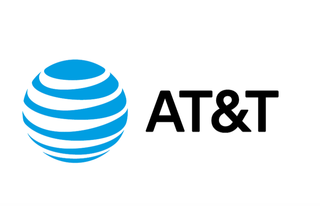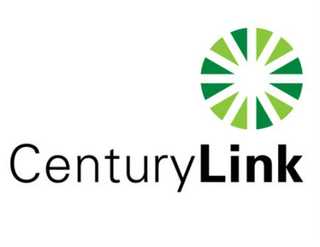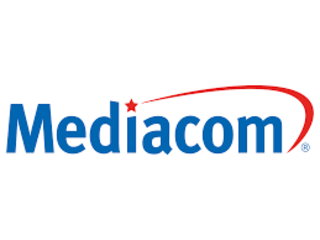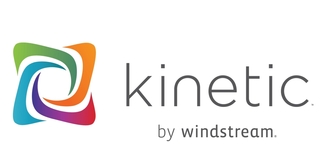Best Rural Internet
Due to the lower population density, internet service providers (ISPs) often don't invest as heavily in developing internet infrastructure for rural areas, resulting in slow and unreliable service. However, today there are an increasing number of fast and affordable options available for rural consumers.
We've reviewed the best rural internet service providers to help you choose the one that best meets your needs. Read on to learn more about our top picks, including their pros and cons, and what you should keep in mind when choosing a rural internet provider.
Our Top Picks For Best Rural Internet
- Viasat – Best Satellite-Based Internet
- CenturyLink – Best for No Contract Commitment
- Mediacom – Best for Streaming Videos
- Kinetic by Windstream – Best for Gaming
- AT&T Fixed Wireless – Best for Customer Satisfaction
Best Rural Internet Reviews
- Available even in very remote areas
- Soft data cap
- Download speeds up to 150 Mbps
- Two-year service contract
- High latency
- High prices
Why we chose it: Viasat is widely available and has faster download times than other satellite-based internet services.
Viasat satellite internet is available in all 50 states, including remote and difficult-to-access regions. In fact, the company claims that its coverage reaches 99% of the U.S. population. The company provides fast internet plans with speeds of up to 150 Mbps in some areas, which surpasses broadband levels, along with generous data caps of up to 500GB per month, depending on the specific plan.
All Viasat plans have soft data caps. Once you use up your monthly allotment of data, the provider will lower your internet speed for the remainder of the month. Download speeds vary significantly by location, so be sure to ask about the exact speeds in your area. Due to the distance that data has to travel with satellite internet, you can expect higher latency on average.
Introductory prices for Viasat plans range from $50 to $200 per month for the first three months. You'll need to have a satellite dish professionally installed on your home, which may cost an additional fee, and the dish rental will add an extra $15 to your monthly bill.
Moreover, there is a minimum two-year contract requirement for all plans during which the price of your plan is guaranteed to stay the same, but there is an early termination fee if you cancel the contract before the end date.
- No annual contract
- Unlimited data
- Locked-in prices for the length of service
- Slow download speeds in many areas
- Limited availability
- High latency
Why we chose it: CenturyLink offers affordable monthly plans and doesn't charge cancellation fees, offering customers flexibility and peace of mind.
CenturyLink offers DSL and fiber internet, although only its DSL service is available in rural areas. The company's only DSL plan costs $50 a month for up to 100 Mbps and unlimited data in all locations where it is available. In some rural areas, you may only get up to 15 Mbps, so it's important to double-check coverage for your area.
The CenturyLink DSL plan is available in 36 U.S. states and reaches many rural areas where other options are unavailable. The only equipment you'll need to access the internet is a modem, which you can rent or purchase from CenturyLink or buy elsewhere. You also have the option to self-install your equipment since DSL works with your home's existing telephone line.
CenturyLink's plans are month-to-month with no contracts, and your monthly price will stay the same as long as you stay with the service. You'll never have to pay cancellation fees for switching to another internet provider.
- High download speeds
- Generous data caps with some plans
- Internet security standards with all plans
- Data overage charges
- One to three-year contracts for most plans
- Limited availability
Why we chose it: Mediacom offers high download speeds and reliable connections — ideal conditions for streaming — at a relatively affordable price.
Mediacom offers cable internet service in 22 states, including some rural areas. Its internet service boasts low latency, which helps provide a smooth streaming experience. And because the company offers wired connections, customers are less likely to have connectivity issues.
Mediacom has four internet plans with download speeds up to 1,000 Mbps and data caps ranging from 300 GB to 6000 GB, so there's something to fit almost everyone's needs. If you exceed your allotted monthly data cap, you'll be charged $10 for each additional 50 GB used.
First-year prices range from $20 to $60 and will increase yearly for the first three years, at which point they range from $80 to $130. As with other internet service providers, you can expect to pay installation and activation fees when signing up with Mediacom. The company requires contracts lasting one to three years, and you'll pay an early termination fee for canceling before the contract ends.
- Unlimited data
- No contracts
- Low latency
- Varying prices and speeds
- Limited availability
Why we chose it: Kinetic internet offers unlimited data, high download speeds and low latency, so you'll never have to worry about maxing out your data or experiencing lag while playing.
Kinetic by Windstream offers DSL, cable and fiber internet connections across 18 U.S. states. Although Windstream rural internet service is limited to DSL in most areas, cable internet may be available depending on where you live. All Kinetic internet plans have unlimited data.
The internet provider's DSL service offers download speeds of up to 200 Mbps. Latency tends to be low, which is essential for a smooth gaming experience. Note that exact DSL speeds and prices vary widely from one location to another, so you'll need to check with Windstream to determine what is available to you.
Kinetic internet does not require customers to sign a contract, so you won't ever have to pay an early termination fee for switching to another provider. However, you should still expect to pay installation and activation fees when you enroll for the service. For an additional $15 a month, you can purchase internet security for your home's devices.
- High J.D. Power customer satisfaction ranking
- No contracts for standalone internet service
- Discount for bundling with cell service
- Only one plan option
- Limited data
- Limited availability
Why we chose it: In an industry known for low customer satisfaction, AT&T consistently ranks high in customer service.
AT&T ranked highest in the J.D. Power 2022 Residential Internet Service Provider Satisfaction Study in the West and South regions and second place in the North Central region. The company provides customer assistance via live chat or phone, with the latter available 24/7. Customers also have access to online technical support resources and community forums where they can talk to other users to troubleshoot any issues they encounter.
AT&T's fixed internet service is available in 18 U.S. states, bringing download speeds of 10 to 25 Mbps, upload speeds of 1 Mbps and low latency to many rural areas without access to wired internet service. The company's fixed internet plans have a 350GB data allotment. If you exceed your data cap, you'll pay $10 for every additional 50 GB used.
Standalone internet service costs $70 a month, but bundling your internet with AT&T cell service will bring the price down to $60 a month. To get your AT&T fixed internet set up, a technician will install an antenna on your house, then run a line from the antenna into your home. This installation process costs up to $99, depending on your location.
Other Rural Internet Providers We Considered
In addition to the rural internet providers above, we also considered Sparklight, HughesNet and Rise Broadband. All three of the following providers offer reasonable options for rural residents, who don't often have a lot of alternatives. They didn't make our top list due to issues with very low data caps, limited availability high costs and/or middling speeds.
Sparklight
- No contracts
- Download speeds up to 940 Mbps
- Low latency
- Limited availability
- Data caps with most plans
Sparklight provides cable internet to numerous rural areas across 21 states. Download speeds range from up to 100 Mbps to up to 940 Mbps, but not all plans are available in all areas and exact speeds vary based on location. Promotional prices range from $39 to $110 a month, with prices increasing after three months.
We didn't select Sparklight as a top rural internet provider because most plans have strict data limits and the availability of the service is quite limited.
HughesNet
- Nationwide availability
- No hard data limits
- Built-in Wi-Fi
- High monthly rates
- Low download speeds
- High latency
HughesNet satellite-based internet service is available in even the most remote sections of the U.S. It offers speeds up to 25 Mbps and soft data limits, meaning your speeds will be reduced after you reach your data allotment. Prices range from $65 to $150 a month, and all plans require a two-year contract.
HughesNet didn't make our top list of rural internet companies because of its slow download speeds, high latency and restrictive prices.
Rise Broadband
- Low introductory prices
- Low latency
- No contract required
- Additional cost for unlimited data
- Reports of poor customer service
- Limited availability
Rise Broadband offers fixed wireless internet service in 19 states. Plans start at $25 monthly for the first year. Most plans have data caps, but you can purchase unlimited data for an extra monthly fee, and it offers download speeds of up to 50 Mbps.
Rise isn't one of our top choices because of its limited availability, mandatory two-year contracts and frequent reports of poor customer service.
Rural Internet Guide
The Different Types Of Rural Internet Options
You may be pleasantly surprised at the number of internet options available in rural areas today. For a long time, satellite-based internet was the only type of rural internet service available, but many areas now have access to cable, fiber, DSL and 5G fixed wireless internet, as well. Here is a brief overview of how each of these internet types works.
Satellite
Satellite-based internet works by using a fleet of satellites orbiting the Earth high in space. These satellites transmit data between a small satellite dish installed on your home and the internet provider's main hub. To establish a connection, a technician is required to install the dish, orient it precisely towards the orbiting satellite and link it to a modem. The modem, in turn, connects either directly to your devices or to a router for Wi-Fi internet service.
Using a satellite over 20,000 miles above Earth allows homes in even the most remote areas to receive internet service. However, because the data has to travel a long way back and forth, satellite internet service has traditionally been very slow and tends to have issues with interference. Thankfully, new satellite technology is helping to combat this problem: speeds are now technically comparable to those of cable and DSL service up to about 100 Mbps.
Cable
Cable internet uses the same coaxial cable that connects to your TV for cable TV service. This wire connects your home's modem with data-transmitting cables that run underground and underwater.
Cable speeds average about 100 Mbps, although they can reach up to 1,000 Mbps. Cable internet combines high speeds with low latency but is only available in areas where the underground infrastructure is already in place.
Fiber
Fiber internet transmits data through light pulses that run through glass or plastic fibers. These internet-providing fibers may run directly to your home or the curbside, connecting to a traditional cable that carries the data the remaining distance to your home.
Data is able to travel through the fibers much more quickly than through traditional cables, making fiber optic internet very fast, with speeds consistently around 1,000 Mbps. Unfortunately, fiber service isn't currently available in most rural areas, although its range is continually expanding.
DSL
DSL (Digital Subscriber Line) internet employs telephone lines to establish a connection between the internet service and the modem in your home. Unlike traditional dial-up internet service, DSL is perpetually connected to the internet, and it doesn't interfere with your ability to use the phone while online. In fact, most providers don't require you to have an active home phone for DSL internet service.
DSL download speeds are faster than dial-up, ranging from 1 Mbps to 400 Mbps. Speeds slow down the further you are from the provider's access point, which is a disadvantage in many rural areas. Even so, DSL is more widely available than cable or fiber and faster than satellite internet.
5G Fixed Wireless Internet
Fixed internet service connects to a 5G receiver installed on your house. The antenna links wirelessly to a nearby tower and by a short cable to your home's modem or router. This type of internet service works similarly to satellite internet, except it transmits data through radio frequencies from ground towers rather than via orbiting satellites.
5G fixed internet can reach up to 1,000 Mbps, although it commonly operates from 100 Mbps to 300 Mbps. Because it's based on newer technology, availability is limited. Homes must be within about 10 miles of an internet provider's tower to receive fixed wireless service.
What To Consider When Choosing A Rural Internet Provider
There's a lot to consider when choosing a rural internet provider. This section will discuss the top factors to consider when deciding which service will best meet your needs.
Download/Upload Speeds
Although advertised as internet "speeds," the numbers you see on the websites of internet service providers (ISPs) actually refer to the capacity of a given connection rather than how quickly information moves through it.
- Download speed refers to how much data can travel from a server to your device at once, like when you stream a video or download a file.
- Upload speed defines how quickly data moves from your device to a server at one time, like when you post a video or picture online.
Both download and upload speeds are measured in megabits of data per second, or Mbps. Download speeds are almost always higher than upload speeds, and a provider's internet speed generally refers to download capacity. High download speeds are important for browsing and streaming, two of the most common online activities.
Latency
Latency measures the time it takes for data to move between a server and your device. It is measured in milliseconds. The lower the latency, the faster your internet connection will be and the less lag you'll experience.
Even if your provider offers high-speed internet, high latency will slow it down. Low latency is particularly important for online gaming, though it also improves streaming and browsing speeds.
Contract Requirements
Many internet service providers require you to sign a one, two or even three-year contract. Long contract lengths lock you in with a provider, and if you decide to make a change, you'll need to pay an early termination fee. This often costs upwards of $100.
If you're unsure how an internet service will perform in your area, a long contract may be a bad idea. It will be a hassle and an extra expense to change providers if you find that the service isn't meeting your needs. Contracts can also make it difficult to upgrade or downgrade plans if you need a change down the line.
Availability
Depending on where you live, availability may be your top consideration when choosing an internet provider. Fiber is very rarely available in rural areas; cable may not be an option in these areas, either. DSL is more common in remote areas because it runs on telephone lines, but if you live far from the DSL provider's access point, you may experience slow speeds and high latency.
Fixed internet is becoming more widely available nationwide and can be a good option if you can't get wired service due to a lack of local infrastructure. If you're struggling to find a provider in your area, consider satellite service, which is available virtually everywhere in the U.S.
Installation
Make sure to find out what hardware your ISP needs to install in your home, how long it will take and whether you'll be charged extra for the equipment and labor. Depending on the type of internet, installation can take anywhere between 30 minutes and several hours. Some providers offer a self-installation option that can save you time and money if you're comfortable doing it yourself.
You may have the option to rent the hardware from the internet provider, buy it outright from the provider or purchase it elsewhere. If that's the case, you can sometimes save money in the long run by purchasing it yourself. Before making a purchase, be sure to check out the best routers for high-speed internet to ensure you get the fastest speeds possible.
Rural Internet FAQ
How do I get rural internet services?
Which type of internet is best for rural areas?
There are pros and cons to each type of rural internet service. For example, satellite-based internet suffers from high upfront costs and latency, but it's the only type of service available in many rural areas. Cable will net you faster speeds, but these types of internet service are not widely available in rural locations.
If you have multiple options, you'll want to determine your priorities and your monthly internet budget to find the plan that best fits your needs.
How do you improve rural internet speeds?
One of the best ways to improve rural internet speed is to plug your device directly into your router or modem using an ethernet cable. A wired connection will run faster than Wi-Fi. If you're still struggling to get fast speeds, it's worth calling your provider to find out if it offers a plan that can better accommodate your household's internet needs.
To improve Wi-Fi speeds, make sure your router is running on the latest technology. Updating or upgrading your router can often increase your internet speed. Also, ensure that your router is well-positioned in your home, meaning that it is not hidden behind other appliances or inside of a closet or cabinet. The higher up you can position it, the better.
How We Chose The Best Rural Internet
When selecting the best rural internet providers, we considered many factors, including
- How widely available service is throughout the U.S., particularly in rural areas
- The selection of plans offered by each provider and their cost
- Internet speed based on latency and download speeds
- Data limits, which impact how much you can use the internet before paying overage fees or having your speed lowered
- Customer satisfaction based on user reviews from third-party sites and customer satisfaction surveys
Summary Of Digg's Best Rural Internet
- Viasat – Best Satellite-Based Internet
- CenturyLink – Best for No Contract Commitment
- Mediacom – Best for Streaming Videos
- Kinetic by Windstream – Best for Gaming
- AT&T Fixed Wireless – Best for Customer Satisfaction




